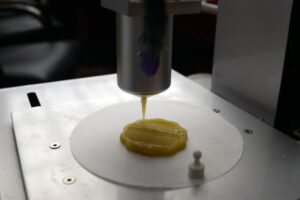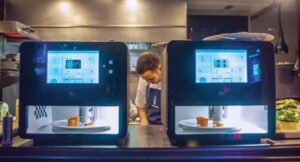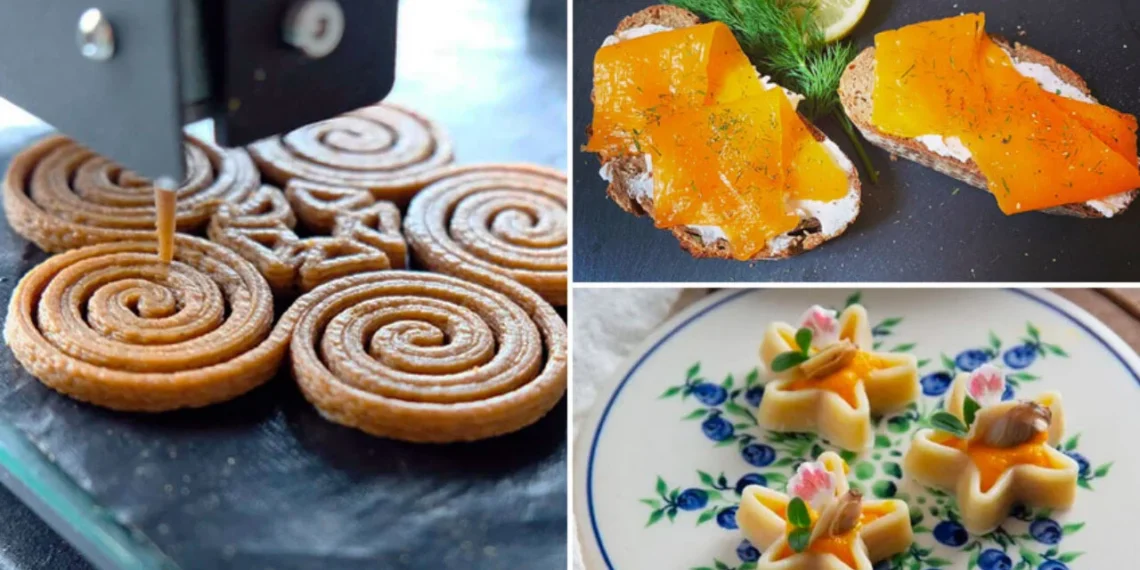3D Printing and Food
The use of 3D printing technology in the food industry is a rapidly growing field, offering new possibilities for creativity, customization, and sustainability. With the ability to create intricate and complex designs using food materials, 3D printing is transforming the way food is designed, produced, and consumed. In this article, we will explore the use of 3D printing in food, including its advantages, applications, and future potential.
Advantages of 3D Printing in Food
One of the key advantages of 3D printing in food is the ability to create customized and complex designs quickly and efficiently. With 3D printing technology, it is possible to produce food designs that would be difficult or impossible to create using traditional cooking methods. This allows chefs and food designers to create unique and intricate designs that can be customized to the tastes and preferences of individual customers.

Another advantage of 3D printing in food is the ability to produce small batches of food quickly and efficiently. With 3D printing technology, it is possible to produce small runs of food designs without the need for expensive equipment or large-scale production facilities. This allows chefs and food designers to offer more variety and flexibility in their menu offerings, catering to the changing tastes and preferences of customers.
Applications of 3D Printing in Food
There are many applications of 3D printing in food, from creating customized desserts to producing complex and intricate dishes. One of the key applications is in the production of customized desserts and confections. With 3D printing technology, it is possible to create intricate and complex designs using edible materials, allowing chefs and food designers to create unique and personalized desserts that reflect the tastes and preferences of individual customers.
Another application of 3D printing in food is in the production of complex and intricate dishes. With 3D printing technology, it is possible to create food designs that incorporate multiple layers and textures, offering a new level of creativity and innovation in the culinary arts. This can help to differentiate chefs and restaurants from their competitors, offering unique and innovative dishes that appeal to a wider range of customers.
In addition, 3D printing is being used to produce food designs that incorporate new and innovative ingredients, such as plant-based and sustainable materials. With 3D printing technology, it is possible to produce food designs that incorporate alternative ingredients, offering new possibilities for sustainability and eco-friendliness in the food industry.
Future Potential of 3D Printing in Food
The potential of 3D printing in food is vast and continues to grow as the technology advances. In the future, 3D printing technology could be used to produce food designs that are even more intricate and complex, offering greater customization and flexibility in design and production.
In addition, 3D printing could be used to produce food designs that incorporate new and innovative ingredients and flavours, such as personalized vitamin and nutrient supplements. With 3D printing technology, it is possible to create food designs that incorporate specific vitamins and nutrients, allowing for personalized and customized nutrition plans.
Another potential application of 3D printing in food is in the production of food designs that incorporate new and innovative technologies, such as sensors and electronics. With 3D printing technology, it is possible to create food designs that incorporate sensors and electronics, allowing for new and innovative applications in areas such as health and wellness monitoring, and food safety.

However, there are also challenges and considerations to keep in mind when it comes to the use of 3D printing in food. One of the key challenges is around food safety and hygiene. While 3D printing technology has the potential to offer new possibilities for food design and production, there are concerns around the safety and hygiene of 3D printed food. This can be particularly important in the food industry where safety and hygiene are essential.
In addition, there are also challenges around the availability and accessibility of 3D printing technology in the food industry. While 3D printing technology is becoming more widely available, there are still many areas where access to this technology is limited or non-existent. This can be particularly challenging in the food industry where traditional production methods are still widely used.
Despite these challenges, the potential of 3D printing in food is vast and continues to grow. With its many advantages and applications, 3D printing is transforming the way food is designed, produced, and consumed, offering new possibilities for innovation, creativity, and sustainability.
In addition, 3D printing technology has the potential to offer significant cost savings in the food industry, reducing the need for expensive equipment and large-scale production facilities, and improving operational efficiency and profitability.
Moreover, the use of 3D printing in food can also have important implications for the future of the food industry. With the ability to produce innovative and personalized food designs quickly and efficiently, 3D printing technology can help to drive innovation and creativity in the food industry, promoting a more diverse and inclusive approach to food design and production.

In addition, the use of 3D printing in food can also help to promote sustainability and eco-friendliness in the industry. With the ability to produce designs using alternative and sustainable materials, 3D printing technology can help to reduce the environmental impact of food design and production and promote a more sustainable approach to manufacturing.
Conclusion
The use of 3D printing in food is transforming the way food is designed, produced, and consumed, offering new possibilities for innovation, creativity, and sustainability. With its many advantages and applications, 3D printing technology is revolutionizing the way chefs and food designers approach food design and production.
With careful planning and consideration, the food industry can ensure that 3D printing is used in a responsible and effective manner, promoting a more efficient, effective, and sustainable approach to food design and production. As the technology continues to advance, it will be exciting to see how 3D printing is further integrated into the food industry, offering new possibilities for innovation, growth, and creativity.






